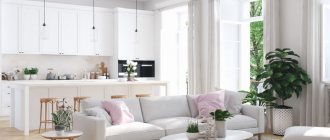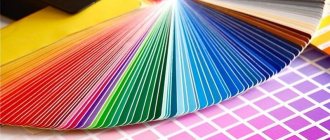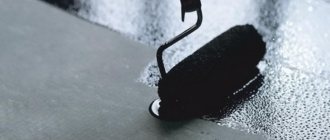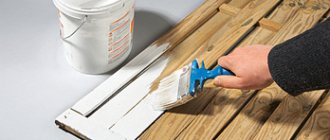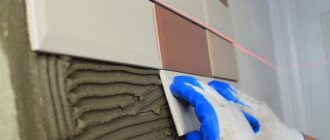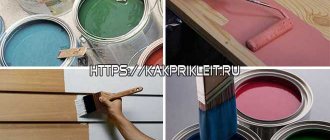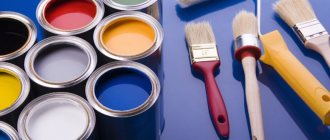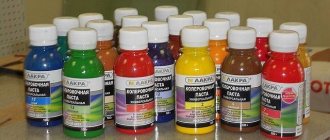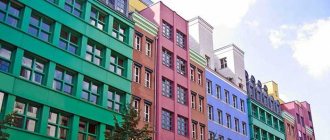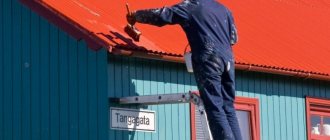Epoxy paint is one of the types of paint and varnish compositions that is highly durable. The main component is epoxy resins. The materials of this group are not afraid of loads and friction, so they can be used in almost any conditions.
Surfaces that are suitable for coating are glass and concrete, plastic and wood. Epoxy-based paint can be combined with any materials.
general description
Two-component varieties of epoxy paints are available. They contain resin along with a hardener. But there are also so-called powder and aerosol options. Basically, the latest types of compositions are used when it is necessary to paint the surface of automobile parts.
Cold-curing epoxy resin is a component that is most relevant for use in domestic conditions. Epoxy paint only takes a day to cure. There is no additional impact on the surface.
Industrial conditions require materials with increased strength. Only hot-curing epoxy resin meets such requirements. It is used in the production of epoxy paints in powder form. Two-component and aerosol analogues are based on cold-curing resins.
There is a significant difference between the compositions. The network of paint molecules becomes thicker and stronger when it is hot-cured. But the cold version does not imply the presence of such strong ties.
Painting features
To ensure complete hardening of the finishing layer, it is recommended to set a lower temperature and extend the curing time. This will help increase the strength of the coating and reduce the likelihood of smudges. The manufacturer indicates the optimal solidification temperature in the accompanying documents.
It is recommended to warm up massive metal products in advance. Then the time during which the parts are in the oven will be sufficient for hardening. Dust should not be allowed in the room. It is prohibited to transport elements on which the paint has not yet cooled.
Main advantages
The general properties of epoxy resin paints can be described as follows:
- A wide selection of colors and textures used, making it possible to implement any design ideas.
- The ability to use the material for finishing both residential and industrial premises.
- High level of adhesion to metal and brick, concrete.
- Resistance to various chemicals.
- Resistance to mechanical stress.
- Waterproof, which makes it possible to use the material as waterproofing for bathrooms and swimming pools.
- Both floors and walls can be painted.
- Creating surfaces with maximum strength. Any epoxy paint for metal provides this opportunity.
Acrylic and epoxy paints are often available in aerosol form. They are characterized by protection against corrosion, a high level of resistance to chemicals and mechanical stress. The surface does not attract dust and dirt.
The base forms a durable glossy coating that is resistant to scratches and chips. Metal paint extends the life of the original surface.
Varieties and recommendations for selection
Epoxy enamel paints are conventionally classified by type of application and composition. Different application techniques are applicable to each type.
Powder coating
Powder coating is a special type of coating that is created on a surface exclusively in industrial conditions. The paint is applied using a special device, inside which additional pressure is created by connecting to the electrical network. Pros:
- the most durable coating;
- resistance to aggressive influence of external factors;
- duration of operation.
Minuses:
- requires special skills when applying;
- used under strict operating rules.
Epoxy powder coating is used for painting various objects, equipment, and indoor walls.
Two-component formulations
This is the most common type of coating and is used for indoor living spaces.
Pros:
- creating a durable and elastic coating;
- various colors;
- ease of use.
Minuses:
- short shelf life;
- the need to work at certain temperature conditions.
Two-component paints are applied using rollers, brushes or sprayers.
Aerosol epoxy compounds
Aerosol application is convenient and effective. Paint is filled into designated containers and sprayed from a certain distance.
Pros:
- smooth coating;
- ease of application;
- surface ability to self-clean;
- elastic layer, preventing the formation of air bubbles.
Minuses:
- you must have skills in working with a spray gun;
- special rules of application technique must be observed;
- high price of aerosol formulations.
The layer created using aerosol application is most often particularly resistant to scratches and damage. This is due to the fact that in all areas of the coating it remains uniform and the same in thickness.
Types of epoxy paints
There are several types of this group of materials. The technical characteristics lie the main difference between the different compositions:
- Epoxy-polyester. Known for its low cost and average abrasion resistance. The material does not turn yellow when exposed to sunlight and successfully resists high temperatures, scratches, and other types of mechanical damage. But rust and chemical solvents are dangerous for such surfaces. Most often, such paints are used as decorative decoration.
- Polyester powder paint. Among the distinctive characteristics are a high level of wear resistance, a wide selection of colors and textures. A sufficient number of gloss levels have also been created. The composition is low toxic. Protects various types of surfaces from friction. Sometimes this material can replace a primer.
- Low temperature compounds. These types of epoxy powder paints go through a polymerization process in special chambers. In this case, in the first twenty minutes the temperature is maintained at 180 degrees.
- Standard paints. They also suggest using special chambers that maintain temperatures up to 220 degrees for the first ten minutes.
"Epostat"
A separate type of EPC, which is very widely used in various fields, is the primer - Epostat enamel. This is a wear-resistant, chemically resistant 3-in-1 two-component epoxy enamel. It has increased resistance to chemicals, which makes it suitable for use in the petrochemical and gas industries, and in hydraulic structures.
This paintwork material is both an anti-corrosion primer, a rust converter and a wear-resistant paint. The main advantages of Epostat epoxy enamel are: fast drying (less than 4 hours), temperature resistance (-120 degrees - + 40 degrees), gasoline and oil resistance, resistance to salt and fresh water. Complete readiness of the painted surface for use is possible after 7 days. As a result of using this type of two-component epoxy-based paint on metal, a smooth, semi-glossy, completely uniform surface of the product is obtained. The consumption of primer and enamel per square meter is 160-200 g, which results in a layer of film 80-100 microns thick.
Technical data of Epostat primer enamel:
| Base material | Epoxy resin |
| Film appearance | Homogeneous semi-gloss surface |
| Mass fraction of non-volatile substances, % | 72 – 78 |
| Conditional viscosity according to V3-246 (nozzle 4), sec, not less | 50 |
| Drying time to degree 3 at t (20.0±0.5)°C, h, no more | 4 |
| Film strength upon impact, cm, not less | 50 |
| Film strength in bending, mm, no more | 2 |
| Resistance to static influence of water at (20.0±2)°С, h, not less | 72 |
| Film resistance to 3% sodium chloride solution, h, not less | 72 |
| Degree of grinding, microns, no more | 40 |
| Adhesion, point, no more | 1 |
What does powder paint contain?
Diane oligomers are the main components in epoxy powder paints. These are substances with a molecular weight of up to 1400-2500. There are other elements in the composition:
- substances such as viscosity and flow regulators, hardening accelerators;
- pigments and fillers;
- hardeners and modifiers.
Fillers with hardener and other similar components occupy approximately 40 percent of the composition when it comes to two-component options used in manual self-painting of surfaces. In this case, pigments and modifiers, spreading regulators, become relevant components.
Epoxy paint powders are also known as compounds. When applying them, they try to make the layer as thick as possible.
This material has no modifiers; 70 percent of the internal volume is occupied by fillers with a low coefficient of thermal expansion. Most often, this function is transferred to quartz in the form of dust or fiberglass. Two-component paint is no exception.
Material consumption per 1 square meter
There are several ways to reduce paint consumption. To create a liquid base, add more solvent to the base than necessary. In this way, the amount of paint used is reduced, but the properties of the created layer are reduced. It is possible that the service life will be shortened, and the basic qualities will change for the worse.
If you use paint according to the instructions, then you need to determine in advance the budget involved in purchasing a certain amount of paint. Typically, 1 square meter requires about 350 milliliters of composition.
The following factors influence the calculations:
- features of the material from which the surface is created;
- coating absorbency;
- the need to make 2 or more layers to cover the shortcomings of the previous coating;
- method of application;
- features of enamel, amount of solvent in the composition.
Experts recommend purchasing enough paint material to leave a small container as a reserve.
Application area
Compositions such as conventional epoxy paint, as well as its acrylic-epoxy and epoxy-polyester varieties, have found wide application in various fields. Thanks to the use of such compositions, several types of coating are formed: quick-drying, textured, glossy, matte, fluorescent, protective, anti-slip.
These paints are suitable for painting:
- containers with chemicals;
- façade elements;
- floors and walls;
- toys;
- radiators, heaters;
- office furniture;
- decorative garden figurines;
- electrical appliances;
- internal and external parts for passenger vehicles;
- household items;
- accessories for tourists.
Concrete floors in bathrooms are also often coated with epoxy paints. Then the impact of moisture will not be scary, and the neighbors will be able to forget about leaks. This option is a good alternative to conventional ceramic tiles.
The compositions are suitable for providing additional protection when working with coils and other metal elements. When using such paints, wood receives reliable protection from harmful microorganisms when a special coating is formed.
On video: review of Picante epoxy floor paint.
Application method
Before applying epoxy polymer paint, surfaces must be cleaned mechanically or chemically (for example, iron, zinc, chromium phosphates). The dye is applied by spraying with a manual or automatic sprayer in an isolated chamber or room. Then the product is moved to the oven, where under the influence of temperature the particles fuse and the coating polymerizes.
You can purchase such paints on the website of the manufacturing company powderoyal.ru at the best prices.
What is important to know
Epoxy resin for cars, enamels for metal and other products belongs to the group of synthetic polymers. When the base is combined with the hardener, a thermochemical type reaction occurs. At the same time, heat is released in large quantities. Two-component compositions require care and caution during operation. Safety rules must be followed in any case:
- When preparing and applying paints in powder form, you cannot do without special clothing. It is mandatory to use such elements as a respirator with overalls and gloves. It's good if you have glasses on hand.
- Special sticks are used to connect the trains. Accessories for the food industry are not recommended for use.
- Denatured alcohol or warm water will help get rid of paint if it does get on your skin. It will be difficult to remove the frozen composition, even if the epoxy-polyester variety is used.
- Ventilation must be provided in the room where painting is carried out.
- Cans of paint and hardeners are stored at home at a temperature of no more than 40 degrees. Sources of heat and light should not be near these containers. Metal products will also require compliance with these rules.
Before painting, it is recommended to carry out a set of preparatory work in order to get rid of traces of old coatings. Chips and potholes are repaired if they can be found.
TOP 7 best offers for self-leveling acrylic
Bulk or liquid acrylic is a group of substances that are intended for the restoration of bathtubs using a specific method. The method of restoring the attractive appearance of the container involves mechanically cleaning the surface, degreasing, drying and applying (pouring) the composition.
The self-leveling acrylic kit includes a base and hardener. The standard shade is white or colorless. If necessary, the mixture can be tinted. The main advantage of the technique is its cost. Self-restoration costs 15-20% of the price of new plumbing.
If the estimate includes the services of a bathtub painting specialist, the amount will be about a third of the cost of purchasing and delivering the bathtub. The rating includes acrylic from different manufacturers. They differ in price, composition, and features of use. Let's take a closer look at popular brands of acrylic.
The polymer can not only paint over the walls of the bathtub, but also flow into pores and scratches, making the surface even and smooth.
Place #1 - FINNACRYL-24
Used to restore cast iron plumbing fixtures and metal bathtubs. The coating is glossy and smooth. The pot life of the material after mixing the components is 60 minutes. If the composition is not used within the specified time, it will be unusable.
In addition to the basic set, you can purchase blue, green, yellow, brown, red, burgundy, purple colors or buy ready-made color mixtures
Characteristics:
- , Saint Petersburg;
- flow rate - 1.7 m (4 kg), 1.5 m (3.4 kg), 1.2 m (2.7 kg);
- White color;
- hardening time - 24 hours;
- shelf life - 12 months.
At temperatures above 25 degrees, acrylic hardens within a day. If the temperature ranges from 17 to 25 degrees, it will take 30-36 hours to form a durable film.
Before use, it is recommended to place the mixture in the bathroom so that the ingredients warm up to an acceptable temperature. After combining the components, the working composition must be thoroughly mixed with a drill-mixer for about 10 minutes and left to brew for another 5 minutes.
The base and hardener must turn into a homogeneous substance so that no film remains on the walls and bottom of the bucket. If you use a poorly mixed mixture, yellow spots will appear on the surface.
FINNACRYL-24 produces a thin, durable film that spreads evenly and does not form bubbles or sagging. Provided that the surface is well pre-cleaned and the technology is followed, the material shows the best results in terms of durability and aesthetics of the coating.
Users are somewhat confused by the positioning of the company itself. Previously, the official website and packaging indicated that production was located in Finland. But by 2022, the origin was changed to Russian. As practice has shown, the quality of the product did not suffer from this.
The manufacturer’s line includes liquid acrylic 24T, which differs from the main composition in its increased fluidity. There are also kits with a hardening time of 16 and 8 hours.
Place #2 – ECOLOR glass
The mixture appeared on the market among the first products in this category (2005) and is still popular. According to most craftsmen, it is “Stakryl” that has the highest strength characteristics.
Two-component enamel is made from raw materials from German companies Basf and Dow. After hardening, the coating is uniform, glossy and smooth.
Positive statistics may be due to the fact that the material has been used a lot for a long time when compared with competitors
Characteristics:
- , Saint Petersburg;
- flow rate - 1.2 m (2.7 kg), 1.5 m (3.4 kg), 1.7 m (4 kg);
- White color;
- hardening time - 24 hours;
- shelf life - 12 months.
The composition remains fluid for 60-70 minutes. It is impossible to dilute the mixture with a solvent in order to increase this time - it immediately liquefies, quickly flows to the bottom of the bath, and a very thin coating is formed. Complete polymerization of acrylic is achieved in 2-4 days. The thickness of the layer varies between 1-6 mm.
The material is superior to its analogues in terms of final strength and smoothness; it is practically not afraid of abrasives, scratches, and detergents. The bath can be used 1-2 days after restoration.
This acrylic is tinted with proprietary toners of blue, pink, light green, violet, beige, and turquoise. Shades are selected from a light palette to a dark one.
A significant disadvantage is that glass acrylic requires skill in application. The slightest mistake when preparing the composition or during the application process will result in bubbles, drips, and clots forming. The second disadvantage buyers note is the strong smell.
The manufacturer’s line includes another type of product - Stakryl Profi. This mixture takes 16 hours to harden.
Place #3 – Ekovanna Lux
The composition is made without solvent. It is cheaper than the two previous analogues and has lower consumption.
The manufacturer uses products from the transnational company HUNTSMAN, German companies Evonik and Byk Chemie as a raw material base. The recipe was developed taking into account surveys of control groups of master restorers.
You can add xylene to the mixture in an amount of up to 60 g per set. A pronounced odor will appear, but fluidity will increase
Characteristics:
- , Moscow;
- flow rate - 1.2 m (2.45 kg), 1.5 m (3.01 kg), 1.7 m (3.57 kg);
- White color;
- hardening time - 24 hours;
- shelf life - 12 months.
The material is designed for independent non-professional use, so when kneading the substance is as homogeneous as possible, without lumps, which makes application easier. There is no strong smell.
It is easy to apply, no bubbles or drips are formed. The composition is characterized by good adhesion, fluidity retention and long-term hardening. A significant advantage is excellent fluidity. Even a thin layer of the mixture can mask unevenness and uneven color of the surface.
"Ekovanna Lux" completely polymerizes within 24 hours. The film used to enamel the bathtub is characterized by minimal thickness, but durability.
The line contains acrylic with silver ions, which prevents the development of bacteria in a humid environment. The enamel actively prevents the proliferation of fungi and microbes, and in terms of characteristics and price it does not differ from the main composition.
Another representative of the line is “Shungite”. Natural shungite is added to this acrylic, so the material is black and has bactericidal properties. All other parameters are the same as the standard composition.
Place #4 – SipoFlex-24
This self-leveling acrylic is made from raw materials from leading European and American brands - Basf, Du Pont, Dow. The material is characterized by excellent quality and adhesion to cast iron and metal surfaces.
The material is easy to work with: it is quite elastic and spreads well when applied. Even a non-professional master can handle the restoration of a bathtub.
In addition to self-leveling acrylic, the company produces hot-curing compounds for chemical anchors, polymer floors, epoxy compounds, adhesive compositions, which indicates the scale and responsibility of the company
Characteristics:
- manufacturer - Sipo, Moscow;
- flow rate - 1.2 m (2.53 kg), 1.5 m (3 kg), 1.7 m (3.63 kg);
- White color;
- hardening time - 24 hours;
- shelf life - 12 months.
Acrylic does not have a strong odor, and no allergic reactions to the components of the drug have been identified. It is toxic only in liquid form, like other substances. After hardening, the film is not hazardous to health. The technology for preparing and using the composition is similar to the previous ones. Its service life is 70 minutes.
During the application of the mixture, no air bubbles or smudges are formed. When SipoFlex hardens, it turns into a bright white, smooth and glossy surface. In addition to the main composition, the product line includes acrylic with a hardening time of 16 hours.
Place #5 – PlastAll Classic
The correct pronunciation of the name is “plastol” (not “plastal”). Acrylic is produced without the addition of harmful solvents (acetone, butyl acetate, nonylphenols, mutagens, etc.). This is the only composition in the rating that shows good adhesion not only to cast iron and metal, but also to ceramics, plastic, wood, and concrete.
Liquid acrylic "Plastol" does not turn yellow, maintaining the ideal surface color. The manufacturer guarantees the absolute whiteness of the coating for 8 years.
Characteristics:
- , Tolyatti together with PABREC, Slovenia;
- flow rate - up to 1.2 m (2.5 kg), 1.2-1.5 m (2.8 kg), 1.5-1.7 m (3.4 kg), from 1.7 m ( 3.9 kg);
- White color;
- hardening time - 36 hours;
- shelf life - 60 months.
The mixture recipe includes raw materials from Germany, Holland and the USA. The product is certified according to the European standard DIN EN 71-3, which indicates its complete safety for children in the solid state.
The product range up to 1.2 m (2.5 kg) is specially designed for the restoration of shower trays. The pot life of the diluted substance is 90 minutes. When applying the mixture, almost no bubbles or drips appear. Temperature resistance - up to 120 degrees.
The material for restoring cast iron bathtubs and steel sanitary ware completely polymerizes in 36 hours. The coating is durable and durable. There is practically no smell. In addition to the classic composition, the company’s assortment includes 4 more mixtures. They differ from each other in viscosity, fluidity, and hardening time.
“Premium” dries in 24 hours, but it also needs to be applied within an hour. "Titanium" leaves a thin film, but it is more difficult to level than "Classic". “Super” dries in 16 hours, but is applied within half an hour. “Light beige” has a milky, creamy tint.
Specialists of the manufacturing company have organized a network of professional restorers PlastAllProfi. The site allows you to choose a master who has passed examination tests and received a certificate for the right to work with the material.
Place #6 - YarLIsoat 616
This pourable acrylic was developed in 2010. The composition uses components from the American company DuPont, German manufacturers Dow and BykChemie. The material gives a coating thickness of up to 6 mm. Can be used for restoration of containers in which drinking water is stored. This fact is confirmed by relevant documents.
The Yaroslavl plant has its own research center where product tests are carried out, which is a guarantee of high quality acrylic
Characteristics:
- Manufacturer: Yaroslavl Paint and Varnish Products Plant;
- flow rate - 1.2 m (2.9 kg), 1.5 m (3.4 kg), 1.7 m (4 kg);
- White color;
- hardening time - 36-48 hours;
- shelf life - 12 months.
The product is supplied in a metal Euro container, which eliminates the risk of counterfeiting and damage during transportation. The design of the bucket protects the contents from premature opening of the goods by unauthorized persons.
The composition can be tinted in a signature tone of blue, emerald, black, yellow, red, blue-violet, burgundy, red-brown. The smell during the bath renovation process is insignificant and disappears in a couple of hours.
The pot life of the mixture is 40-45 minutes. If the room temperature is more than 24 degrees, the time of working with the composition is reduced to 20 minutes. Acrylic differs from competitors in its long hardening time. The coating remains snow-white for many years and does not turn yellow.
You can use the bathroom after two days. But it is recommended to change the mixer, lay tiles and work that is mechanically hazardous to the coating every other week.
Place #7 – EkACRYL
The composition does not contain solvents; no air bubbles are formed when pouring. The mixture is moderately thick, applied in a thick layer, but after dripping, about 2-3 mm of the substance remains on the walls, and 5-6 mm at the bottom.
After drying, the film remains plastic for some time and you can easily cut off drops on the sides of the bathtub, they do not break off. The coating is glossy and smooth.
The material is characterized by good adhesion to steel and cast iron surfaces, resistant to hot and cold water, detergents
Characteristics:
- Manufacturer: Yaroslavl Paint and Varnish Products Plant;
- flow rate - 1.2 m (2.7 kg), 1.5 m (2.7 kg), 1.7 m (4 kg);
- White color;
- hardening time - 16 hours;
- shelf life - 12 months.
The two-component material mixes well until smooth. The mixture does not have a pronounced chemical odor. Plasticity and fluidity make EkACRYL easy to work with. The viability of the substance lasts about an hour.
But restorers note the lowest strength of this acrylic among its “colleagues”. The coating can even be damaged by a falling shampoo bottle.
Special compositions for working with concrete
Epoxy paints for concrete floors have become a new version of a long-known material. Classic powder formulations of this group do not require mixing with water. Because of this, the paint loses some of its properties and becomes cloudy over time. In the case of concrete paint, distilled water is added rather than ordinary water. The result is a type of epoxy dispersion.
Epostone is a manufacturer that produces just such types of compounds. The most widely used are aqueous epoxy primers-enamels used when working with floor surfaces. The possibility of application on wet concrete and improvement of the technical characteristics of the coating itself are the main advantages of such paints. The cost savings are also noticeable.
Epoxy floor coating (1 video)
Various epoxy paints (24 photos)
Painting equipment
To complete the coloring you will need:
- A special chamber for applying the dye, equipped with air suction devices.
- Feeder.
- Pneumatic sprayer, which is connected to the feeder. The result is a gun-like tool with which paint is applied.
- The polymerization chamber in which the procedure necessary to complete the process is performed.
When the sprayer operates, a mixture of air and dye is created. A torch is formed, the particles of the composition receive an electric charge, after which they settle on the workpiece, held by the force of electrical attraction. The shape of the torch depends on the nozzle installed on the gun.
